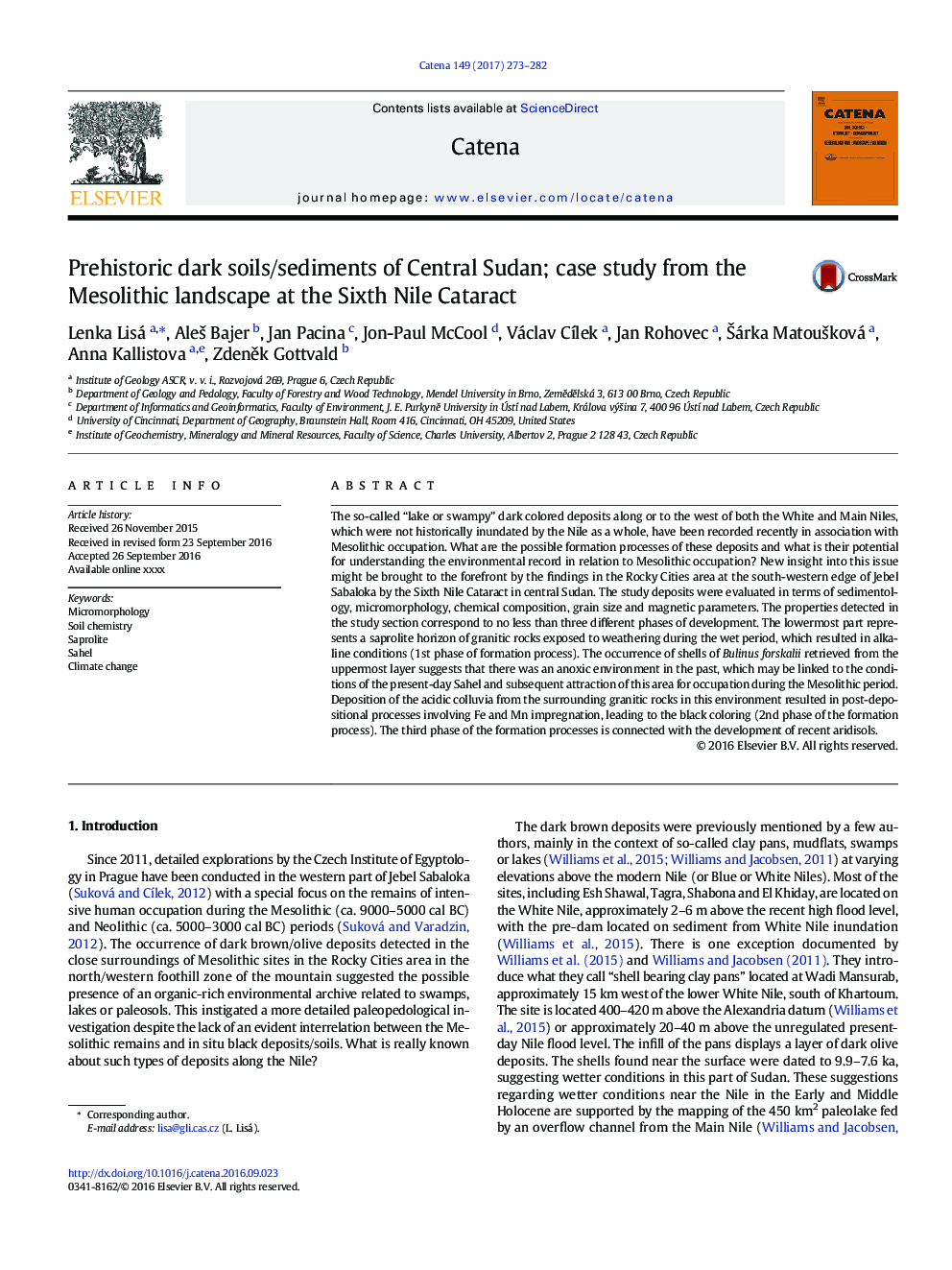| Article ID | Journal | Published Year | Pages | File Type |
|---|---|---|---|---|
| 10997834 | CATENA | 2017 | 10 Pages |
Abstract
The so-called “lake or swampy” dark colored deposits along or to the west of both the White and Main Niles, which were not historically inundated by the Nile as a whole, have been recorded recently in association with Mesolithic occupation. What are the possible formation processes of these deposits and what is their potential for understanding the environmental record in relation to Mesolithic occupation? New insight into this issue might be brought to the forefront by the findings in the Rocky Cities area at the south-western edge of Jebel Sabaloka by the Sixth Nile Cataract in central Sudan. The study deposits were evaluated in terms of sedimentology, micromorphology, chemical composition, grain size and magnetic parameters. The properties detected in the study section correspond to no less than three different phases of development. The lowermost part represents a saprolite horizon of granitic rocks exposed to weathering during the wet period, which resulted in alkaline conditions (1st phase of formation process). The occurrence of shells of Bulinus forskalii retrieved from the uppermost layer suggests that there was an anoxic environment in the past, which may be linked to the conditions of the present-day Sahel and subsequent attraction of this area for occupation during the Mesolithic period. Deposition of the acidic colluvia from the surrounding granitic rocks in this environment resulted in post-depositional processes involving Fe and Mn impregnation, leading to the black coloring (2nd phase of the formation process). The third phase of the formation processes is connected with the development of recent aridisols.
Related Topics
Physical Sciences and Engineering
Earth and Planetary Sciences
Earth-Surface Processes
Authors
Lenka Lisá, AleÅ¡ Bajer, Jan Pacina, Jon-Paul McCool, Václav CÃlek, Jan Rohovec, Å árka MatouÅ¡ková, Anna Kallistova, ZdenÄk Gottvald,
